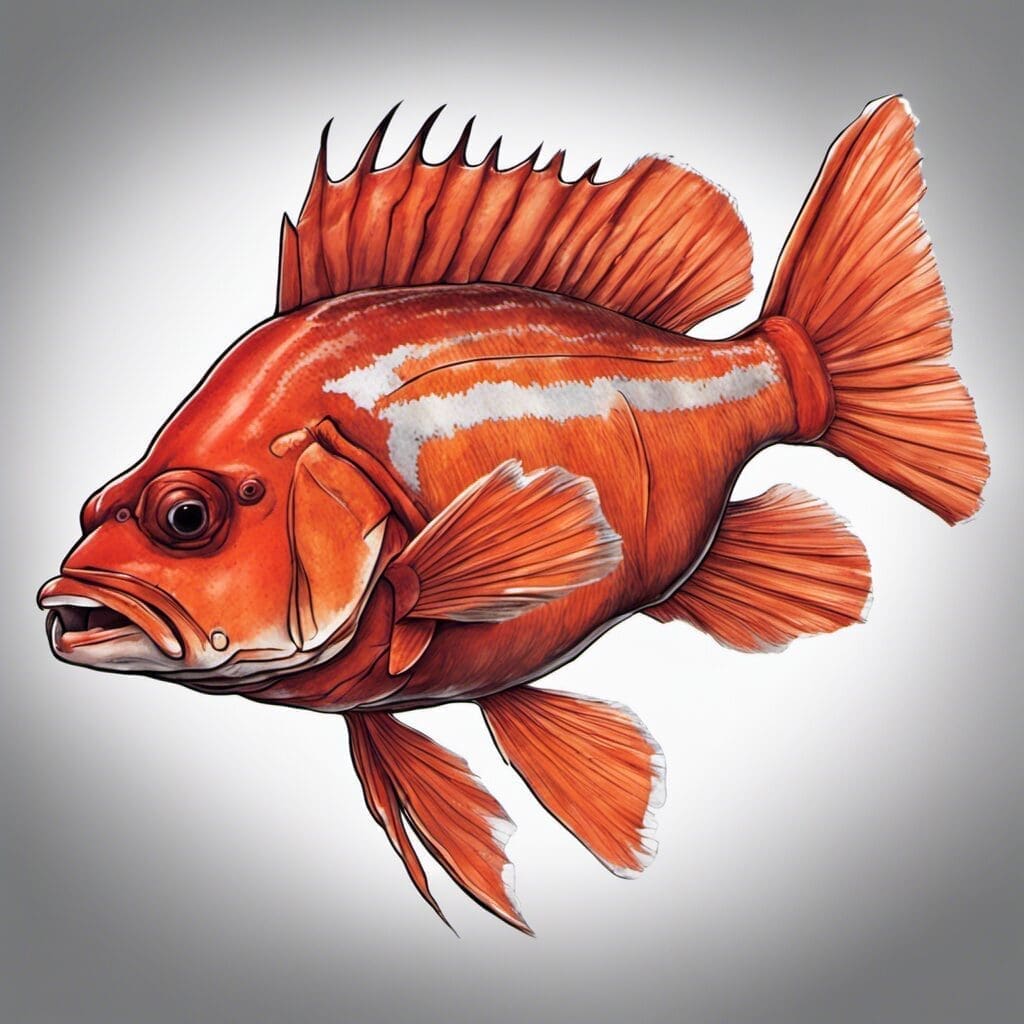Introduction: Vermilion Rockfish
The Vermilion Rockfish, scientific name Sebastes miniatus, is a member of the Scorpaenidae family. This species, also known as the vermillion snapper, is semi-benthic, meaning it often stays close to the sea bed but can also frequent open waters.
Conservation Status
The Vermilion Rockfish is currently classified as “Least Concern” by the International Union for Conservation of Nature (IUCN). This rating indicates that the species is widely distributed and relatively abundant.
However, continuous conservation efforts need to be in place to maintain its status as such. This includes sustainable fishing practices, monitoring population trends, and implementing protective measures in habitats where it is prevalent.
Statistics
A summary of the statistics of the Vermilion Rockfish:
| Statistic | Average | Range |
|---|---|---|
| Length | 17 inches | 10-24 inches |
| Weight | 7 lbs | 3-12 lbs |
| Average Lifespan | 20 years | 10-30 years |
Distribution
Vermilion Rockfish are found in the Pacific Ocean, specifically from Baja California, Mexico, to Alaska, USA. No significant migration patterns have been observed for this species to date.
Habitats
Absorbing the marine settings, the Vermilion Rockfish inhabit saltwater environments at depth ranges of 30 to 500 feet, though they can be found up to 900 feet below the surface. They favor temperatures between 10°C and 14°C.
When and Where to See
Vermilion Rockfish are most active during late spring to early fall, where they can be seen swimming near rocky outcrops and reefs. Lay eyes on them during daylight hours as they go about their daily routines.
Best Fishing Locations
Among the top fishing spots for Vermilion Rockfish are the following:
- San Miguel Island, California
- Pt. Conception, California
- Cordova, Alaska
- Catalina Island, California
- Prince William Sound, Alaska
Find the Vermilion Rockfish by focusing searches around underwater structures like reefs and rocky terrains, a favorite habitat for the species.
How to Catch
These fish are drawn towards squid or cut fish as bait. The preferred fishing methods include trolling and bottom fishing, with late spring to early fall being the prime season for catching.
Identification Guide
Vermilion Rockfish are easily recognized by their vibrant red color, complemented by black spots on the fins. They also have a symmetrical tail, fin spines, and a robust body.
Culinary Profile
Vermilion Rockfish have a sweet, delicate flavor fit for various dishes. The cooked flesh is lean, low in fat, and rich in protein. Popular recipes include grilled Vermilion and Vermilion Rockfish ceviche.
Additional Information
Around dawn or dusk, Vermilion Rockfish feed on krill, copepods, and small baitfish. Their natural predators include Sea Lions, larger fish, and occasionally birds.
While the species hasn’t been heavily featured in folklore or historical events, it is a beloved catch by recreational and commercial fishermen due to its vivid coloring and delectable taste.
References and Further Reading
For further information, consider the following sources:
- National Oceanic and Atmospheric Administration
- Monterey Bay Aquarium

